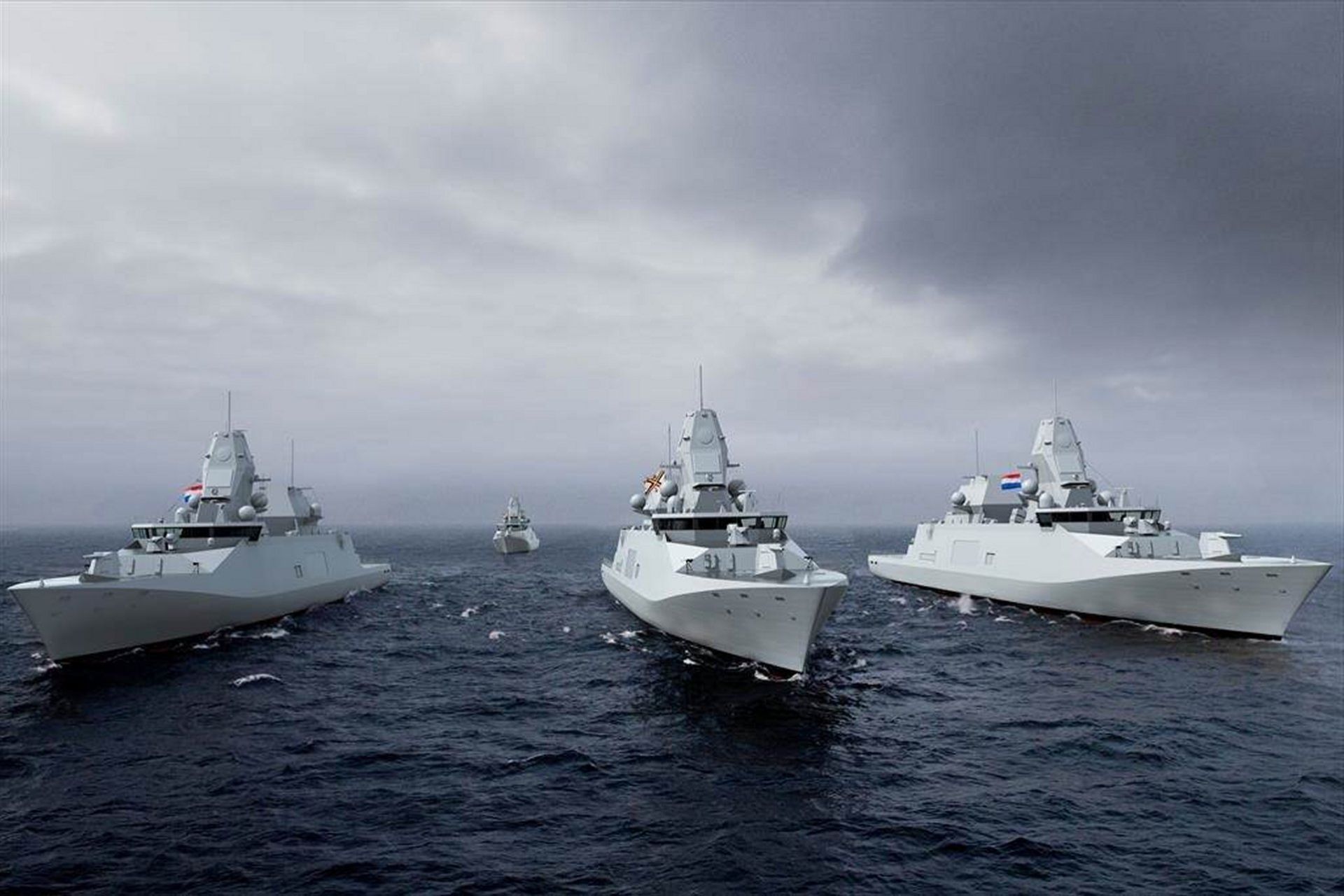Breaking News
Dutch Navy to expand Anti-Submarine Fleet with new frigates under 2024 Defence White Paper.
According to information published by the Dutch MoD on September 5, 2024, the Dutch government unveiled its Defence White Paper 2024, outlining a series of significant investments aimed at enhancing national security, with a key focus on expanding naval capabilities. In response to escalating global tensions and new security challenges, the Royal Netherlands Navy is set to acquire additional frigates designed for anti-submarine warfare (ASW), reinforcing the nation's role within NATO’s maritime defense strategy.
Follow Army Recognition on Google News at this link

Artist rendering of the future Dutch and Belgian Anti Submarine Warfare frigates. (Picture source: Dutch MoD)
The Dutch Anti-Submarine Warfare Frigate (ASWF) program reflects the Navy’s growing focus on addressing the rising risks posed by increasingly sophisticated submarines in critical maritime regions. The project involves the replacement of four Karel Doorman-class frigates, two each for the Dutch and Belgian navies, with vessels optimized for modern ASW missions but also capable of performing multi-role tasks.
The ASWFs are designed with stealth in mind, particularly to minimize acoustic signatures. This is achieved through hybrid diesel-electric propulsion, allowing the vessels to operate in a near-silent mode when needed to avoid detection by enemy submarines. This quiet operational profile is crucial in modern anti-submarine warfare, where a ship’s acoustic footprint can be the difference between detection and evasion.
One of the most critical elements of the ASWF is its sensor suite, provided by Thales. The heart of the detection capability is the dual-band radar system, which integrates the Active Phased Array Radar II (APAR II) in the X-band and the Sea Master 400 in the S-band.
The sonar system onboard is equally sophisticated, featuring hull-mounted sonar and towed sonar arrays designed for long-range detection of submarines. These systems can operate in tandem with the ship's NH90 helicopter, which is equipped with dipping sonar and capable of deploying Mk54 lightweight torpedoes, creating a multi-layered ASW capability that enhances the frigate’s ability to track and engage submarines at a distance.
For air defense, the ASWF will carry RIM-162 ESSM Block 2 missiles, capable of intercepting aerial targets like aircraft and incoming missiles. For surface warfare, the frigate is armed with the Naval Strike Missile (NSM), providing a robust anti-ship capability. Additionally, the vessels will likely feature some form of close-in weapon system (CIWS) to defend against smaller, high-speed surface threats.
Challenges and Strategic Implications
One of the key challenges for the ASWF program is ensuring that the frigates remain relevant in the rapidly evolving threat environment. The proliferation of advanced submarine technologies, including air-independent propulsion (AIP) systems and quieter nuclear submarines, means that anti-submarine warfare is becoming more difficult.
Moreover, the geopolitical context in which these ships will operate is becoming more complex. The Arctic, North Atlantic, and Baltic regions are increasingly contested, with Russian submarine activity intensifying.


























